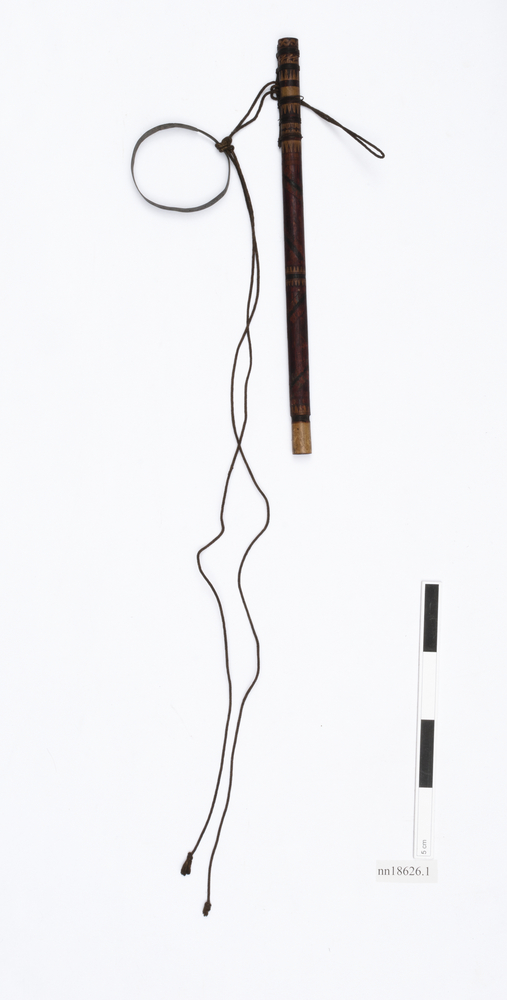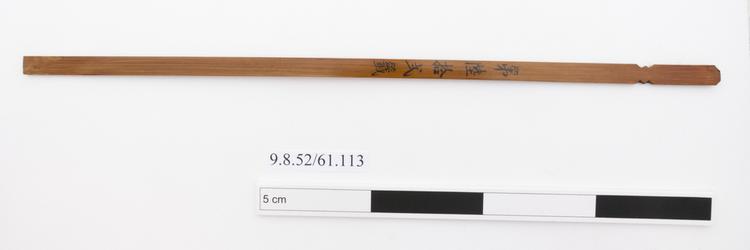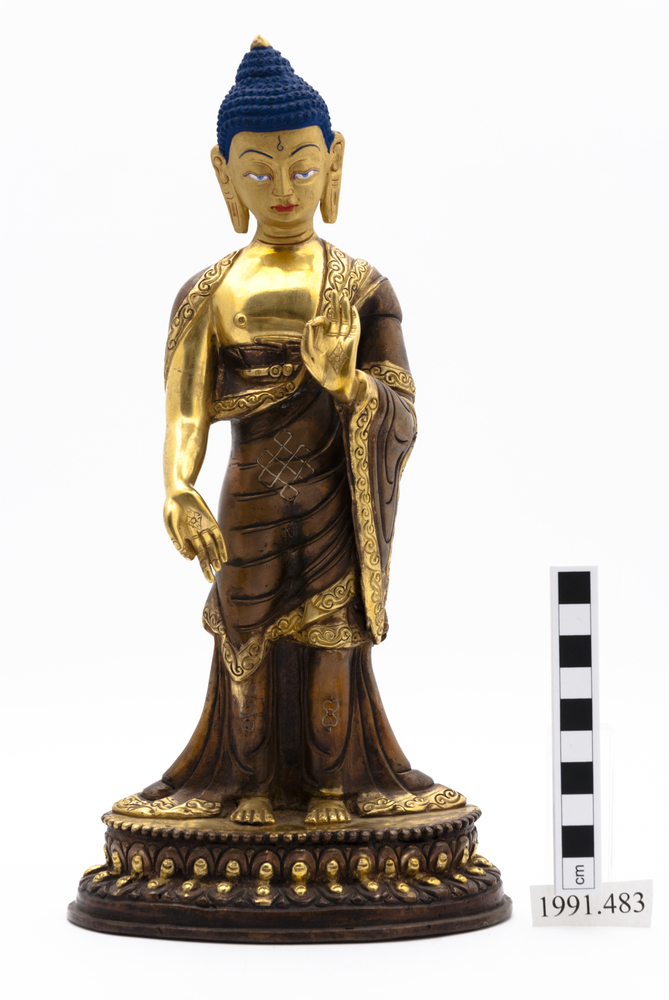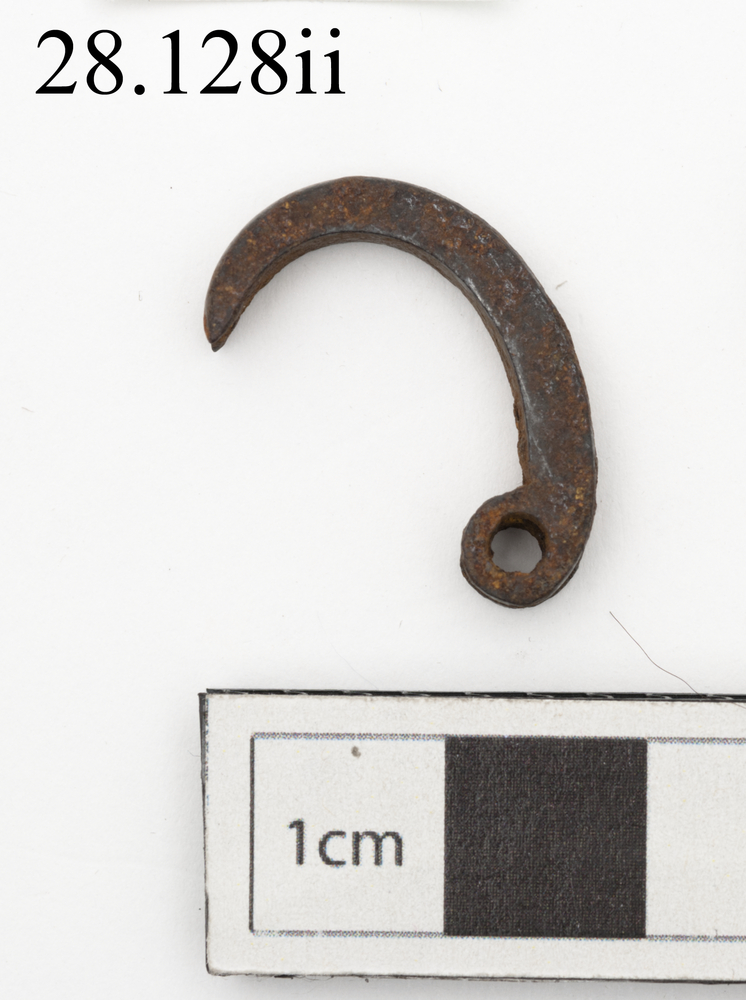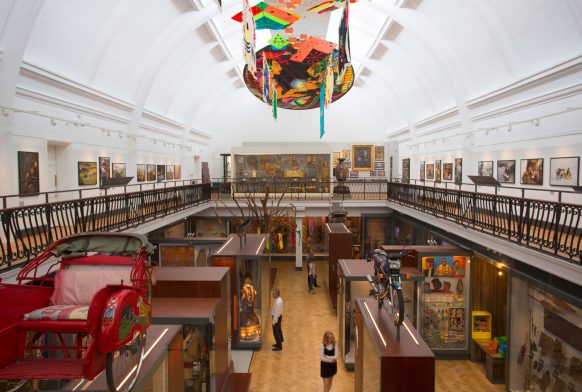
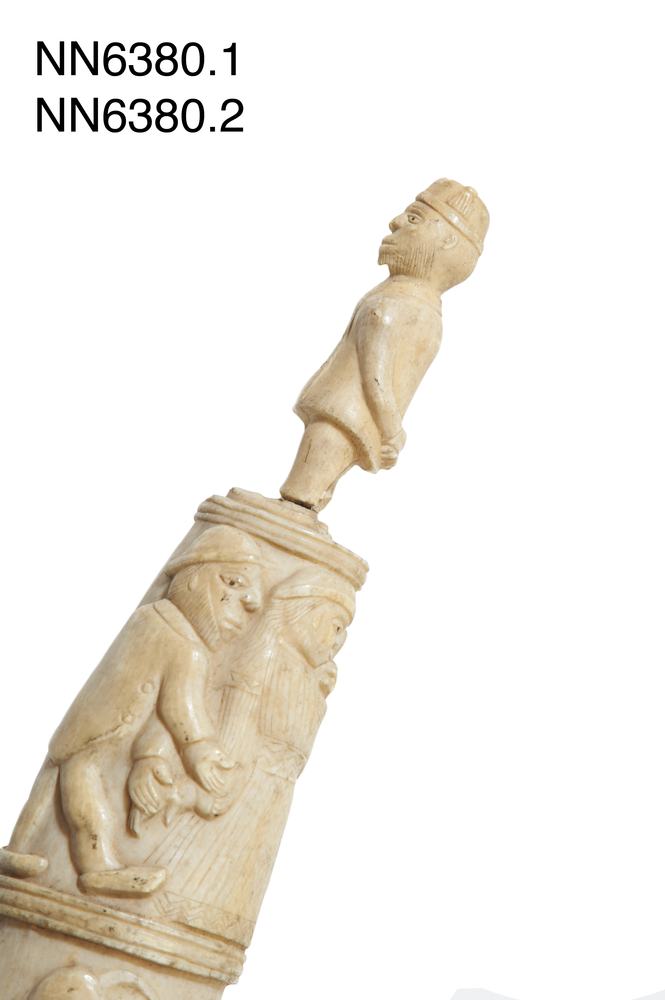
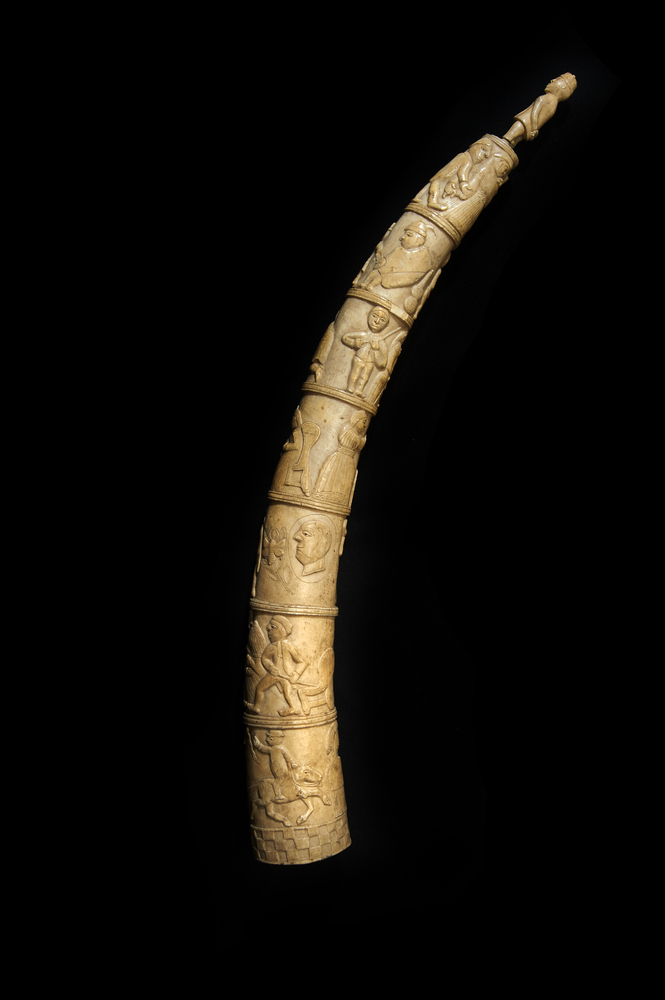
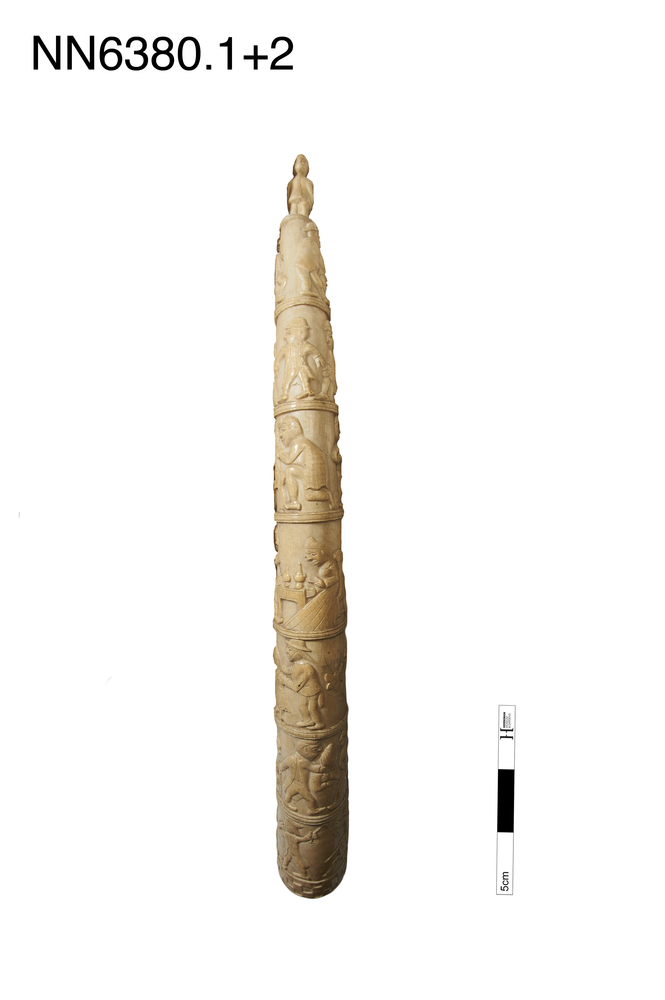
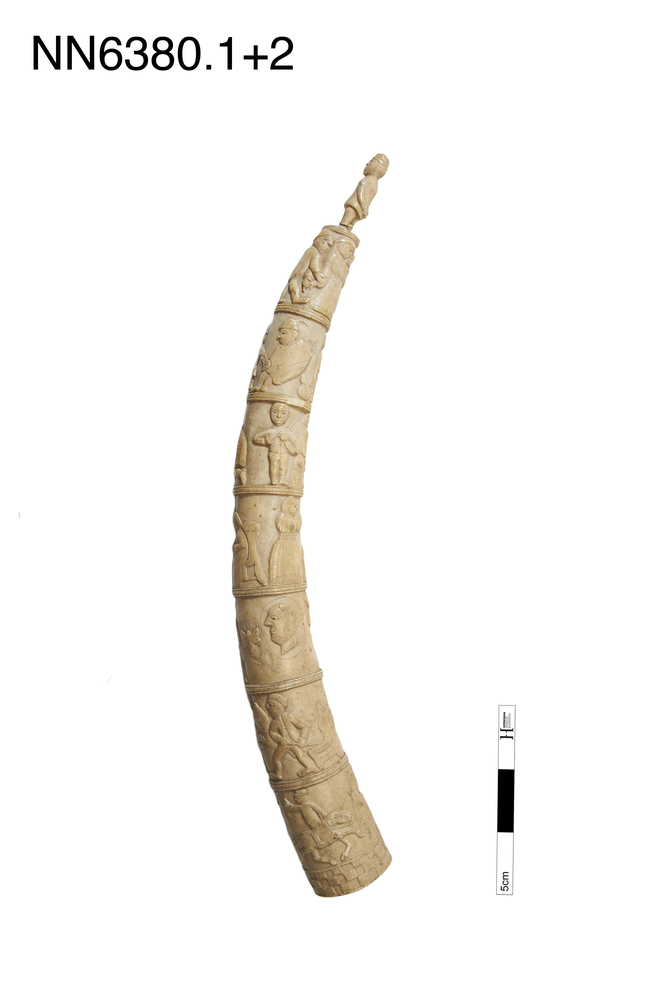
Carved ivory tusk with a segmented register showing scenes from the daily life of the Central African coastal ‘contact zone’ involved in trade with Europeans.
Carved ivory tusks like this one are generally associated with the Loango coast and especially the Vili people. After the abolition of the slave trade in the nineteenth century the power of Loango’s mercantile elites began to decline. Intricately carved ivory tusks began to appear by the middle of the 19th century for sale as “souvenirs” to Europeans who established themselves at trading stations on the coast. Most of the tusks display a spiral register that appears to underline various popular narrative themes. These tusks have been interpreted as having been carved for sale as “souvenirs” to European traders and claims have been made to the effect that the themes depicted on the ivories seem far more orientated towards the tastes of European buyers than to themes in Congo society. Some of them show intriguing references to symbols of the Lemba trading association of pre-colonial Congo. In creating what was, in effect, a new cultural commodity in the form of the carved tusks, Vili ivory sculptors would appear not only to have left evidence of their entrepreneurial energy, but also of their identity and the drama of their community life and mercantile activities. In this context it would seem significant that the tusks frequently show scenes of porters carrying boxes of trade goods destined for the interior, and others carrying ivory to the coast for export. In addition they show various scenes from everyday life in 19th century Loango and include humorous and satirical imagery, some of which may have been intended to poke fun at Europeans.



